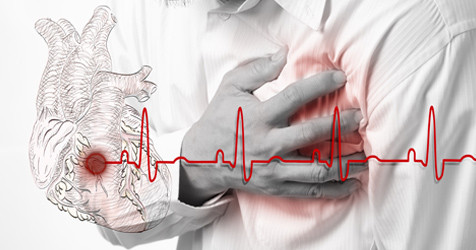
ANGIOPLASTY AFTER A HEART ATTACK: A CARDIAC CHALLENGE
Friday, October 25, 2019WHAT IS ANGIOPLASTY?
An angioplasty, also called a “percutaneous transluminal coronary angioplasty,” is a procedure your doctor can perform to open the blood vessels that supply blood to your heart muscle. These blood vessels are also known as coronary arteries.
In many cases, they insert a coronary artery stent following angioplasty. The stent helps keep the blood flowing and the artery from narrowing again.
Angioplasty may reduce your risk of having another heart attack or needing open-heart bypass surgery.
The procedure is most effective if your doctor performs it within the 24 hours after a heart attack.
Angioplasty performed more than 24 hours following a heart attack may not provide any benefits. The faster you receive treatment for a heart attack, the lower the risk of heart failure and other complications.
HOW IS ANGIOPLASTY PERFORMED?
Doctors usually perform this procedure while people are under local anesthesia. First, they’ll make an incision in your arm or groin. They’ll insert a catheter with a tiny inflatable balloon on the end into your artery. Using X-ray, video, and special dyes, your doctor guides the catheter up into the blocked coronary artery. Once it’s in position, the balloon is inflated to widen the artery. The fatty deposits, or plaque, get pushed against the wall of the artery. This clears the way for blood flow.
In some cases, the catheter is also equipped with a stainless-steel mesh called a stent. The stent is used to hold the blood vessel open and can remain in place after the balloon is deflated and removed. Once the balloon is out, your doctor can also remove the catheter. The procedure may take half an hour to several hours.
WHAT ARE THE BENEFITS OF ANGIOPLASTY AFTER A HEART ATTACK?
Angioplasty for heart attack treatment saves lives. It’s an efficient way to get the blood flowing to the heart again quickly. The sooner your doctor restores your blood supply, the less damage there will be to your heart muscle. Angioplasty also relieves chest pain and may prevent shortness of breath and other symptoms associated with a heart attack.
Angioplasty may also cut the odds that you could need more invasive open-heart bypass surgery, which comes with significantly longer recovery time. Angioplasty may lower the risk of another heart attack.
It may also increase your chances of survival more than clot-busting medications.
WHAT ARE THE RISKS?
All medical procedures come with a certain amount of risk. Just like many other types of invasive procedures, you may have an allergic reaction to the anesthetic, the dye, or some of the materials used in the angioplasty. Some other risks associated with coronary angioplasty include:
- Bleeding, clotting, or bruising at the point of insertion
- Scar tissue or blood clots forming in the stent
- An irregular heartbeat, or arrhythmia
- Damage to a blood vessel, heart valve, or artery
- A heart attack
- Kidney damage, especially in people who have preexisting kidney problems
- An infection
This procedure is also associated with the risk of stroke, but the risk is low.
WHY KIMS?
KIMS’ clinical goal for treatment of angioplasty is simple — establish a well-coordinated plan that includes a close partnership among patients and the top cardiologists in Hyderabad. To maintain heart health, our interdisciplinary team considers a series of factors as they determine your method of treatment.
KIMS has a singularly cooperative approach to treatment, rare among large institutions. Our best angioplasty surgery doctors in Hyderabad consult with specialists in other divisions and work with nurses and support staff to create treatment plans and foster interdisciplinary communication, making KIMS the best interventional cardiologist hospitals in Hyderabad
Taking advantage of the research happening every day at Mount Sinai Heart, our team can enroll patients in research trials for new and groundbreaking treatments not yet available elsewhere.
